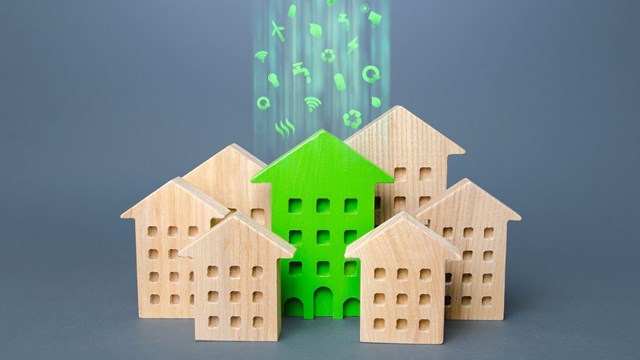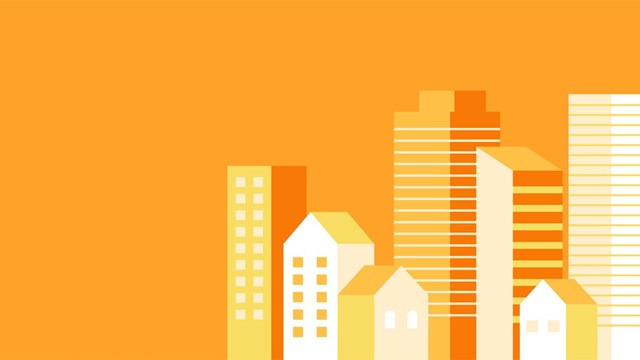Energy efficiency and green improvements to existing buildings have often received less public attention and political play than “sexier” green initiatives such as renewable energy generation with solar panels and windmills or LEED-certified green buildings. Even though improving a building’s energy efficiency offers real return on investments through decreased energy usage and is more practical, and in the short run, more achievable than the aforementioned initiatives, it maintains a lower public and political profile. That is no longer the case, at least not in New York City, with Mayor Michael R. Bloomberg’s Greener, Greater Buildings Plan.
The plan, which focuses on the city’s private buildings of over 50,000 square feet, has several components: a New York City energy code that will mandate the use of newer, more efficient code compliant equipment when buildings are undergoing renovations, mandatory lighting upgrades for large commercial buildings over the next 15 years, a benchmarking system so that buildings’ energy usages may be analyzed and compared, mandatory energy audits and retro-commissioning, green workforce development training to create thousands of jobs, and finally, assistance for financing green upgrades.
The Greener, Greater Buildings Plan represents a considerable step among PlaNYC 2030’s initiatives to reach the goal of achieving a 30 percent reduction in New York City’s annual greenhouse gas emissions below 2005 levels by 2030. New York City’s Office of Long-Term Planning and Sustainability cite that the energy consumed for electricity, heating and hot water in buildings accounts for 80 percent of the city’s carbon footprint, and cumulatively the city’s energy costs are $15 billion per year.
While procedural improvements to existing systems offer the fastest payback in energy savings at the lowest cost, further efficiencies can be attained by replacing existing lighting with more efficient LED lights, insulating and/or installing new windows, caulking leaks, and replacing obsolete boiler components. A term that is getting a lot of buzz in the literature regarding green retrofits is “low-hanging fruit,” and all indicators point that this is what a green residential buildings programs is: a means to achieve goals and targets with relatively little effort. Let us describe in further detail the components of the legislation and how it expects to save consumers $700 million annually in energy costs and reduce the city’s carbon footprint.
New York City Energy Code Bill: Int. No. 564-A
Currently, New York uses the standard energy code known as the International Energy Conservation Code (IECC) along with 42 other states. The improvement that the bill makes is that it eliminates a loophole that existed in the previous code that allowed buildings to continue using non-compliant systems as long as renovations were only undertaken on less than half of a given building. With the new code, any time a renovation is undertaken on any part of a New York City building, the part of the system being renovated must fully comply with the IECC.
Lighting Upgrades and Sub-Metering Bill: Int. No. 973-A
The lighting bill applies to larger commercial buildings, requiring lighting upgrades in buildings over 50,000 square feet to meet the requirements of the New York City Energy Conservation Code and sub-meter tenant spaces over 10,000 square feet. Although residential buildings are excluded in this portion of the initiative, it is useful to know that in New York City lighting accounts for roughly 20 percent of a buildings energy use and carbon emissions.
Benchmarking Bill: Int. No. 476-A
The benchmarking bill requires that private buildings larger than 50,000 square feet undertake an evaluation of their building’s energy profile so that building owners can understand their building’s current energy use and potential buyers and tenants may better asses the building’s value. This information can be used to compare between buildings showing owners how their buildings compare to similar buildings.
Audits and Retro-Commissioning Bill: Int. No. 967-A
With the new legislation, buildings larger than 50,000 square feet must undergo an energy audit conducted by a professional once every ten years after which the retro-commissioning measures recommended in the audit must be undertaken. Retro-commissioning can include properly calibrating, cleaning and maintaining heating, cooling and ventilation systems under the guidance of a professional which will result in savings that can pay back the initial cost of the retro-commissioning in a relatively short time period.
Green Building Financing and Green Workforce Development
Even though retrofits pay for themselves over time, improving the building’s financial health overall, they require some initial financial outlays that some owners may not be able to provide. To start assisting those owners, New York City additional initiatives will establish a revolving loan fund using $16 million in Energy Efficiency and Conservation Block Grants as part of the American Recovery and Reinvestment Act. In addition, the City will partner with key stakeholders in the labor and real estate sectors so that the increased demand for energy auditors, green contractors and other related professions will be met. The mayor cites that the legislation will be a key economic driver creating an estimated 17,880 construction-related jobs spurring both economic activity and improving New York City’s environment.
With this legislation, energy efficiency improvements in buildings have been put front-and-center as a means of achieving sustainability. With New York City taking the lead in this arena it is vital that co-op and condo owners and residents be aware of the changes and opportunities that are coming. By pursuing energy efficiency and sustainability through retro-commissioning and green upgrades building owners may improve the energy and financial performance of their buildings, contributing to their own economic health as well as to the greater economic and environmental health of New York City as a whole.
Nikola Hlady is a volunteer with GreenHomeNYC, a non-profit that helps New York City's buildings go green. He can be reached at nhlady@greenhomenyc.org.










Leave a Comment